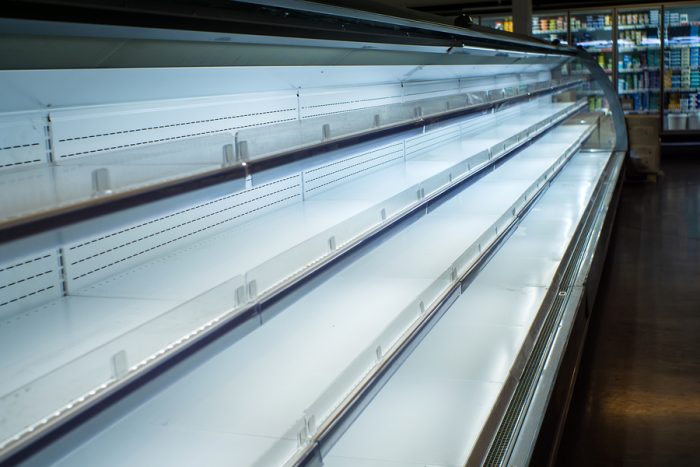Earlier today, I went to a local grocery store as I have on many Saturday mornings. Only, this was my first run to the store following increasing cases for the Coronavirus pandemic, now prompting social distancing. To be expected, there was a long entrance line as store employees were taking precaution by facilitating a process for small groups to enter, in accordance to the number of small groups exiting the store following their purchases.
Silently awaiting for my group’s turn to be let in, I had previously accounted for the possible anxiety and irritability that many in a crowd can hold. Especially, at a time like this. This pandemic has shaken up the normalcy of our lives. For many, they’re having to face loss of control at a time where stocking up on items seems like a way to keep things from falling apart . Out of the role and lens of a Therapist, and simply as a human being, I too have been processing the impact of COVID19, recognizing what feels mostly of out of my control right now. While also being sure not to miss small moments of normalcy or choices that I have for collective wellness and safety.
Surprisingly, I didn’t account for the overwhelm of pressure and power that the myth of scarcity would have on me at this time. Sure, I heard of folks excessively purchasing toilet paper rolls and hand sanitizers, which are now out of stock. Yet, I wasn’t one of those folks. After all, I’d been reading Lynn Twist’s, The Soul of Money for the past couple of months an examining and challenging any remnant of the myth of scarcity in various areas of my life. As Lynn Twist described it, “The prevailing myth of scarcity is that there’s not enough to go around. Somebody’s going to be left out. There are way too many people. There’s not enough food, water, or money.” Thus, generating fear and pressure to make sure that we or our loved ones are not deficient in resources, or left out.
What makes the makes the myth of scarcity so toxic especially during this pandemic, is that people can mistakenly view empty stock shelves as proof that there is not enough to go around, but these empty stock shelves are a result of excessiveness toward taking care of ourselves and our own even at others expense. So, as I stood in the grocery store engulfed in the environment’s panic and pressure of having to “buy more,” I noticed that without conscious consent, I had allowed fear to temporarily hold me in it’s grip. My overfilled cart was proof of this. By taking a pause, I noticed that there were lessons to be learned and opportunity to self-correct and re-align to my internal set point of what’s actually enough. So, here’s what I learned on a not-so regular trip to the grocery store this time around.
1. Its important to enter an environment at a time like this, noticing the environment’s prompted pacing, how you emotionally feel while there, and if your behaviors while there are influenced by any ounce of fear, anxiety, or worry that seeks out your compliance. This is not a recommendation to disregard health and safety precautions. For example, while at the grocery store, I noticed fear sought my compliance in following scarcity’s myth that inevitably someone was not going to get what they needed. There was unconscious pressure to not let that someone be me. When my cart was overfilled, there was a temporary sense of power and content, until I paused and fathomed my role in scarcity’s game and the possible effects it would have on others as well as myself. Instead, I ran through my mind through the usual items purchased on a given week and how long these items are known for lasting in my household. I also asked myself how long did I really need these items to last in my household. The automatic answer was “two and a half, or maybe three weeks”. Getting specific about my usual items and a reasonable time of expectancy (not too short or too long, but enough time to evaluate COVID19 outcomes) allowed for far less than what my cart had been filled with.
2. Be thoughtful about what you want, before reaching for it in public spaces. This is no longer the regular trip to the grocery store, where we look at several avocado options. It’s important that we are thoughtful of others who will potential come to touch items after us and if we’re unsure of our status as a carrier, it’s best to follow the old saying, “look with your eyes, not with your hands”. Once you make a decision on what you want, then go for it. This will also limit the inclination to buy, simply because you have touched something mistakenly.
3. We have never experienced a pause in our economy like this, and the impact of COVID19 is global. So when the normalcy of our lives has been shaken, any and everyone is susceptible to moments that do not necessarily reflect their best selves, but what matters is the ability to notice it and self-correct, and to give a bit of grace room to others. Everyone can benefit from a bit of grace room for how they choose to cope with uncertainty of near future or regulations that out of their control.
For instance while waiting on the line to be let in, it was pouring rain. A woman who had been ahead of line and engulfed by social media threads, was visibly judging others for how they assembled on the line and had even sought to take photos of the experience on her phone. Truthfully, I was annoyed by her lack of mindfulness of how others were coping, and also her racial privilege in usage of space and inclination to take photos without consent. Yet, I reckoned she also needed a bit of grace, and had been experiencing anxiety and trying to cope by keeping busy on her phone. So rather than staring in disapproval, I opted for an opposite action. One, where I stated, “Please do not take photos of us on line, under these conditions and without consent”. In response, she stated, “I’m sorry. It was to show how long the lines were. I wasn’t thinking.” In attempts to connect on social media and contribute info, we can in fact forget to be mindful of the dignity, respect, due privacy of those around us. So, let us remember to be mindful our smallest actions at a time like this, and how we may preserve just a slight bit of normalcy for others, like allowing them to grocery shop with privacy.
4. At any given moment, we all have choices and can make decisions that stand as expressions for overcoming this unfortunate experience through small acts of considerations of the highest good of all. Not just ourselves and our loved ones. Thinking of the highest good of others in current circumstance might look like the following, giving thought and action to how the resources you have access to can also be used in moderation and also made accessible to others in your community as needed. Scarcity will have us keep secret our resources for fear of being asked by others or taken advantaged of, but openness gives more confirmation that we are all in this together and history have shown that mutual aid is what truly helps evolve.
5. While our levels of worry or concern may vary, ridicule of others whose disposition does not match our own, does not eliminate the vulnerability that we all are currently facing. Perhaps, we’ll better cope with the vulnerability faced in the midst of COVID19, by showing curiosity and care to how others bearing these changes and how we can all be of better support to one another.
I’m wishing us all peace and wellness as we endure this pandemic, and the lessons along the way.












Read 0 comments and reply